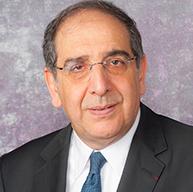
In the world of ophthalmology, researchers have always made vision restoration by retinal repair their goal. Today, this goal is more obtainable than ever through modern technologies and medical practices, and the first successful procedures have already taken place.
With this dream of full vision restoration in mind, Botond Roska, MD, PhD, senior group leader of the Friedrich Miescher Institute for Biomedical Research in Switzerland, and José-Alain Sahel, MD, director of the UPMC Eye Center, have pinpointed the current state of vision repair and the roadblocks that have gotten in the way of success, as well as potential new therapies that might be available in the future in their article, “Restoring Vision,” published recently in the journal Nature.
Regardless of medical advancements, part of what makes treating blindness by retinal repair so difficult, according to Drs. Roska and Sahel, is that the retina is a complex part of the brain. The retina is at the back of the eyeball and contains cells that are sensitive to light and, through the optic nerve, communicate an image to the brain.
“Apart from these major developments in therapies and in our understanding, advances in clinical care to treat blinding diseases have perhaps been slow from the point of view of the patient,” Dr. Roska and Sahel said in their article.
With time and research, the retina has become more manageable, prompting the authors to propose four new medical technology models that might make vision restoration a possibility:
- Gene therapy: This treatment has been made possible through the ability of the adeno-associated virus (AAV) to deliver genes to retinal cells.
- Cell therapy: This treatment provides retinal repair via ectopic cell transplantation to replace damaged or dead cells, but it is still experimental.
- Induced retinal regeneration: This treatment was inspired by certain animals who automatically regenerate their retinal cells. Humans and other mammals are not capable of this regeneration but, in the future, it could become a possibility.
- Artificial retinal stimulation: This treatment involves the patient wearing a camera on their glasses that would be connected to an electronic implant, stimulating the retina and other areas of the eye through light activation to allow the patient to see an image. Higher-resolution electronic implants are currently being developed, and Drs. Roska and Sahel predict artificial stimulation will be an integral part of vision restoration in the future.
While any of these technology models could potentially be used to treat several variations of vision-related diseases, what makes effective treatment difficult is determining which model is appropriate to use for which case. Drs. Roska and Sahel said it depends on whether the patient is blind or partially blind.
“If the patient is fully blind, the goal of treatment is vision restoration, even partial,” Dr. Sahel said. “If the patient is visually impaired with some vision remaining, prevention of additional vision loss is the goal. This can make treatment development difficult, as we don’t want to further damage the vision through a treatment with possible safety concerns.”
Also, due to the complexity of each patient and each retina, Drs. Roska and Sahel said each patient should be treated as an individual to increase chances of vision restoration, opposed to a one-size-fits-all treatment.
“Therefore, we argue that both the diagnosis and the treatment of retinal diseases should be cell-type focused; disease by disease,” they said.
Read more…
